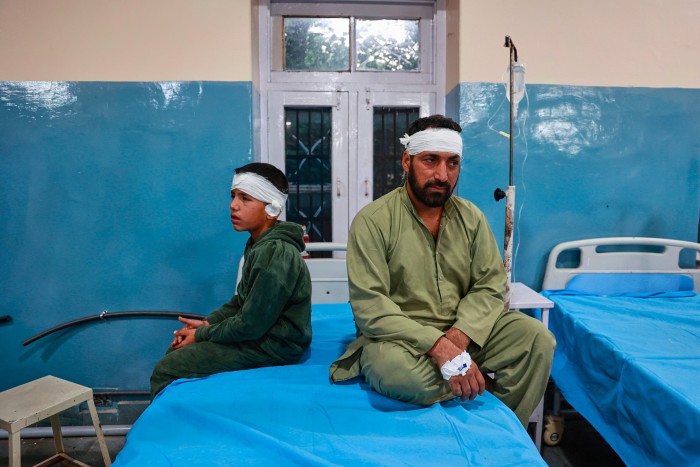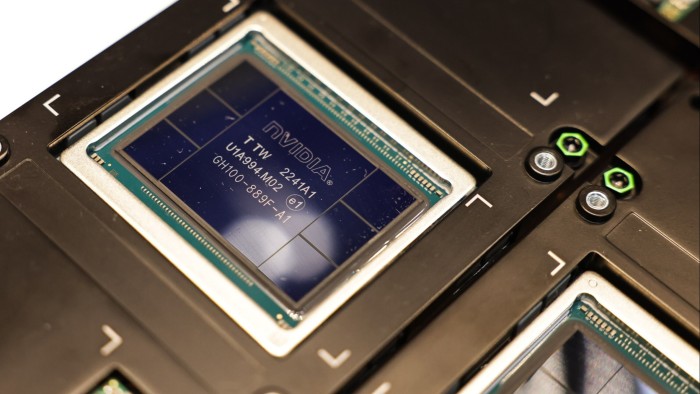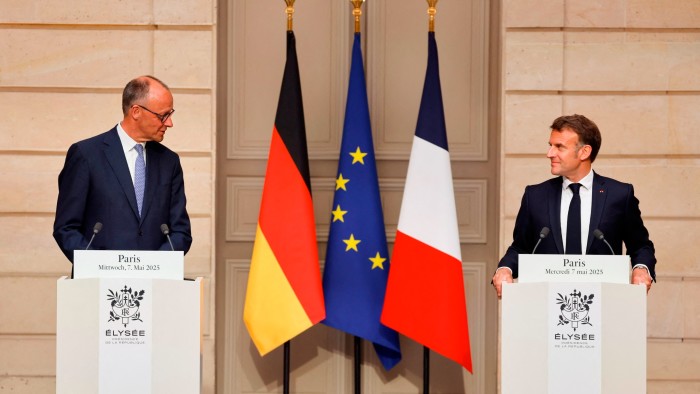Military briefing: How Indian might stacks up against Pakistan

The tit-for-tat strikes between India and Pakistan represent the most extensive military exchange between the nuclear-armed neighbours in decades, killing civilians on both sides.
The attacks follow a massacre in Indian-controlled Kashmir of 25 tourists and one Kashmiri local last month that New Delhi linked to “cross-border” involvement from Pakistan, an allegation that Islamabad denies.
Both countries claim Kashmir and each controls part of the region. Over the past quarter of a century — a period during which India and Pakistan emerged as nuclear powers — the two countries have clashed several times but the military exchanges stopped short of a major war.
This has reflected US willingness to put diplomatic pressure on both sides, and Chinese reluctance, as Pakistan’s major international benefactor, to allow the situation to escalate.
It is not clear if either of these conditions still hold, say analysts.
For Pravin Sawhney, a defence analyst and former Indian army officer, US President Donald Trump “has made it very clear” that India and Pakistan “can resolve their things themselves, and he loves both countries”.
The Indian armed forces on Wednesday said they had targeted nine “terrorist camps” in air strikes in Pakistan-administered Kashmir and some deep inside the international boundary between India and Pakistan. “The targets were neutralised with clinical efficiency . . . no military establishments were targeted,” air force commander Vyomika Singh said on Wednesday.
She said Indian forces used “niche” technology weapons and carefully chose targets to avoid collateral damage to civilians but did not elaborate on the specific arms or methods used in the strikes.
“India has demonstrated considerable restraint in its response,” she added. “However, it must be said that the Indian armed forces are fully prepared to respond to Pakistani misadventures, if any that will escalate the situation.”
Pakistani military and diplomatic officials told the Financial Times they shot down five Indian fighter jets during Wednesday’s clashes, including three French-made Rafales and two Russian-made planes. The FT could not independently verify the claim.
Pakistan’s 660,000-strong military is less than half the size of India’s and its defence spending was a tenth of its eastern neighbour last year, according to the London-based International Institute for Strategic Studies.
Partly in reflection of its size, Islamabad’s military doctrine revolves around “defence, and only going on the offensive if deterrence fails”, said Raza Muhammad, a retired general and diplomat.
India, by contrast, spent $74.4bn on defence last year, making it Asia’s second-largest military budget after China and the world’s sixth-largest overall.
“Superiority comes out when there’s an all-out fight. If it escalates to all-out war, then Indian superiority will come into play and it will be very strong,” said retired Lt Gen Rakesh Sharma, now a distinguished fellow at The Vivekananda International Foundation, a New Delhi-based security think-tank.
“But in case of limited offensives, they could be close to parity.”
Where the two sides are more equal is in nuclear weapons. Both Pakistan and India hold between 160 and 170 nuclear warheads in their arsenals, according to assessments by the Arms Control Association.
Pakistan’s military is working with some Chinese companies to expand the range of its ballistic missiles. India has developed its own intercontinental ballistic missiles — the Agni, whose latest series has a range of up to 5,000km.
The supply of weapons has historically been used to assert pressure on both sides, whose military directors have a hotline to each other.

During the 1999 Kargil War, the last major war between the two countries which killed hundreds of soldiers on both sides, the US stopped supplies of spare parts to US weapons on both sides, but most critically Pakistan’s F-16 fighters. The then US President Bill Clinton put strong pressure on Pakistan’s then prime minister Nawaz Sharif to withdraw his troops from Indian territory.
China provided 81 per cent of Pakistan’s arms imports between 2020 and 2024, according to the Stockholm International Peace Research Institute, as Islamabad has shifted away from more expensive western suppliers and hewed closer to Beijing’s orbit. The majority of Pakistan’s fleet of fighter and ground attack aircraft has been developed by or in co-operation with China.
India, which has its own defence industry, operates significant quantities of Russian equipment, and the two countries co-operate on missile development. It has more recently imported equipment from the US and France, according to the IISS, and Trump has been pushing Modi to buy more American-made weapons.
US secretary of state Marco Rubio said on Wednesday he will “continue to engage both Indian and Pakistani leadership towards a peaceful resolution”.

The Chinese government, which calls itself an “ironclad” friend of Islamabad, has urged restraint from both sides. Despite Beijing’s close ties with Islamabad, analysts say it may not want to jeopardise a rapprochement with India following their recent resolution of a four-year stand-off over a disputed border.
On Wednesday, China, which borders both countries, said India’s military operation was “regrettable” and urged both sides to exercise restraint.
“The Chinese have been developing a relationship with India in the course of the last six months. With the trade and tariffs wars now, China is looking to use India as a big economic avenue to get out of the economic problems that are being caused by the Americans,” said Sharma.
Support to Pakistan could come in any way “that does not involve the Chinese themselves directly . . . this would refer to, say, information or satellites or some kind of air defence weaponry”.
China’s foreign minister Wang Yi, made it clear to Pakistan’s foreign minister Mohammad Ishaq Dar last month, that “China fully understands Pakistan’s legitimate security concerns and supports Pakistan in safeguarding its sovereignty and security interests”.
Asked about the strikes, President Trump said: “I hope it ends very quickly.”
But India’s former army chief of staff, General Manoj Mukund Naravane, said on X after Wednesday’s strikes: “There’s more to come.”









